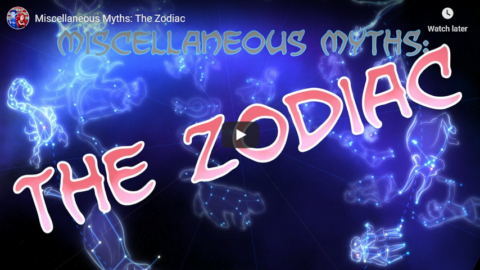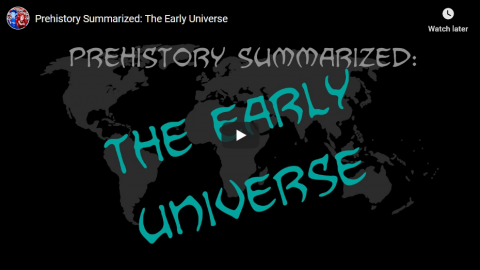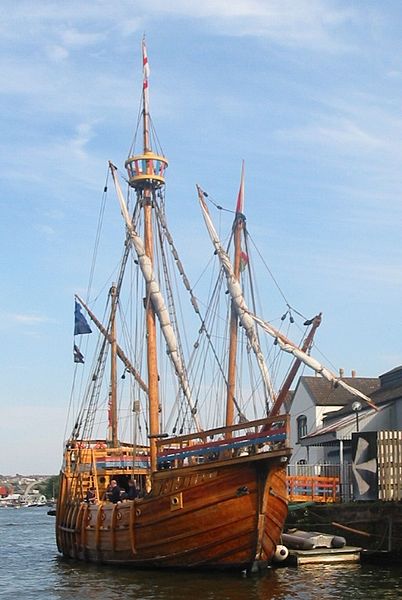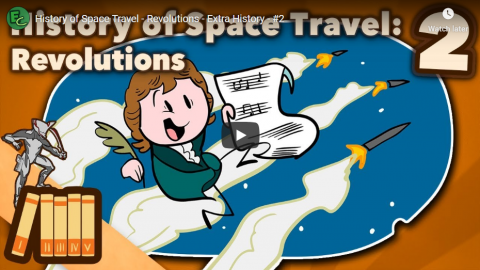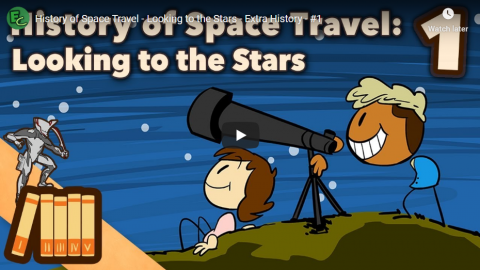Tom Scott
Published 2 Oct 2023The asterisk is important.
■ More on the ELT: @ESOobservatory https://eso.orgThe Extremely Large Telescope, in Paranal, Chile, is probably going to be the largest optical telescope that will ever be constructed. I was invited out there by the UK Science and Technology Facilities Council and the European Southern Observatory, and I wasn’t going to turn down a chance like that.
📰 DISCLAIMER
While the STFC and ESO invited me and arranged the logistics after arrival into the Antofagasta region, I was not paid for this (not even my travel costs) and I have sole editorial control over the video. This is not an advert.
(more…)
January 1, 2024
The largest telescope that will ever be built*
December 20, 2022
Coming of the Sea Peoples: Part 2 – The Old and New Chronology of the Bronze Age
seangabb
Published 2 May 2021The Late Bronze Age is a story of collapse. From New Kingdom Egypt to Hittite Anatolia, from the Assyrian Empire to Babylonia and Mycenaean Greece, the coming of the Sea Peoples is a terror that threatens the end of all things. Between April and July 2021, Sean Gabb explored this collapse with his students. Here is one of his lectures. All student contributions have been removed.
(more…)
August 1, 2022
QotD: Fermi’s Paradox and the Great Filter(s)
Though what he really said is open to doubt, the nuclear physicist Enrico Fermi gave his name to a short and possibly final argument against the existence of intelligent life on other planets. There are 200 billion stars in our galaxy alone. 20 billion of these are like our own sun. Let us assume that one in five of these has planets – and we find new exoplanets every year – and let us assume that one in a hundred of these one in five has one planet with liquid water: that gives us 40 million Earth-like planets. I will not carry on with the assumptions, but it seems reasonable that there should be around a hundred thousand other advanced civilisations in our galaxy alone.
This being so, the “Fermi Paradox” asks, where are they? So many other civilisations – so many of them presumably older and more advanced than our own – and they have not visited us. Nor, after generations of scanning with radio telescopes, have we detected any unambiguous signals from them. Either intelligent life on other planets does not exist, or it is so rare and so far apart in time or distance or both, that we shall never find it.
Writing in 2008, Nick Bostrom of Oxford University takes the argument to conclusions that are either depressing or exhilarating. He proposes a set of Great Filters, each of which limits the emergence of intelligent and technologically-advanced life. The most obvious filters are in the past. We shall soon be able to estimate how many planets in our galaxy have liquid water. We still have do not know how life begins. Obviously, it began here. But we have never been able to create a self-replicating organic process in our laboratories. It may be very unusual. It may also be very unusual, once begun, for this process to evolve beyond the very simple. Then it may be very unusual for larger and more complex living structures to evolve, and hardest of all for anything to emerge with the right combination of mind and appendages to enable the birth of a technological civilisation.
Or the Great Filter may be in the future. It may be that civilisations like our own are reasonably common – but that they invariably blow themselves up shortly after finding how to split the atom.
Bostrop’s conclusion is to hope that, when we get there, we shall find that Mars is, and always has been, a sterile rock. Independent life of any kind on a neighbouring planet would suggest a universe teeming with life, and some probability of civilisations like our own. This being so, the lack of contact would put his Great Filter in the future, and would suggest that we are, on the balance of probabilities, heading for self-extinction. No life at all on Mars, now or in the past, would let him keep hoping that the Great Filter is in the past, and that we may have a splendid progress before us.
Sean Gabb, “Do Flying Saucers Exist?”, Sean Gabb, 2020-11-15.
November 20, 2021
DicKtionary – M is for Mathematics – Newton and Hooke
TimeGhost History
Published 19 Nov 2021Today we turn away from killers and sociopathic rulers and look at two men from the world of science. Isaac Newton and Robert Hooke were certainly very intelligent and creative, but were they dicks as well?
(more…)
November 28, 2020
Miscellaneous Myths: The Zodiac
Overly Sarcastic Productions
Published 27 Nov 2020Thanks to longtime patron Volt for requesting this topic!
We know their names! We know their symbols! We know there’s a truly staggering number of websites dedicated to their stereotypical personality traits! But what do we know about their stories? Let’s discuss!
FUN FACT I GLOSSED OVER IN THE VIDEO: like I said, it’s REALLY hard to determine when these constellations entered Greece. Most people set the date at 300ish, when Eudoxus codified the Greek calendar based on the Babylonian one — but that clashes with the fact that Heracles’s labors predate that by at least three centuries, and they’ve had those zodiacal themes since that lost epic poem was initially written. We know, therefore, that the Babylonian zodiac entered greece between Homer’s time (when he conspicuously didn’t mention them — and neither did Hesiod in his Astronomia) and Peisander’s time (author of the lost Heracleia), basically the interval between 800 and 600 CE. The phoenician traders carrying that info is a reasonable assumption, especially considering how important the stars are to sailors navigating at night. But it is WILD to me how hard this is to research and how nobody seems to have really explored the timeline here!
Two Zodiac merch designs are available on our redbubble!
The modern constellations-only zodiac: https://www.redbubble.com/shop/ap/634…
The MUL*APIN Babylonian zodiac: https://www.redbubble.com/shop/ap/634…Our content is intended for teenage audiences and up.
PATREON: https://www.Patreon.com/OSP
MERCH LINKS: http://rdbl.co/osp
OUR WEBSITE: https://www.OverlySarcasticProductions.com
Find us on Twitter https://www.Twitter.com/OSPYouTube
Find us on Reddit https://www.Reddit.com/r/OSP/
April 13, 2020
Prehistory Summarized: The Early Universe
Overly Sarcastic Productions
Published 23 Sep 2015Blue hits us with some physics! Hold onto your butts. That butt is made of star stuff, ya know. It’s very special. Be proud of that butt. It was forged in the heart of a supernova.
Anyway, yeah, physics.
Guest starring yours truly! Watch out for my extremely subtle and unobtrusive cameos.
The ninja thing is a reference to earlier videos. I think he shows up in the College video and the one about The Borgias.
April 2, 2020
What exactly is one second? | James May’s Q&A (Ep 2) | Head Squeeze
BBC Earth Lab
Published 10 Jan 2013James May discusses what exactly a seconds is. He also delves into how time as we know it could have been totally different. This is because the second had many “rivals” over the years that never got their way.
Outtakes from this video: http://www.youtube.com/watch?v=kLpGHt…
James May’s Q&A:
With his own unique spin, James May asks and answers the oddball questions that we’ve all wondered about from “What exactly is one second?” to “Is invisibility possible?”
February 20, 2020
So that’s why John Cabot got hired!
Anton Howes explains something that I’d wondered about in the latest edition of his Age of Invention newsletter:
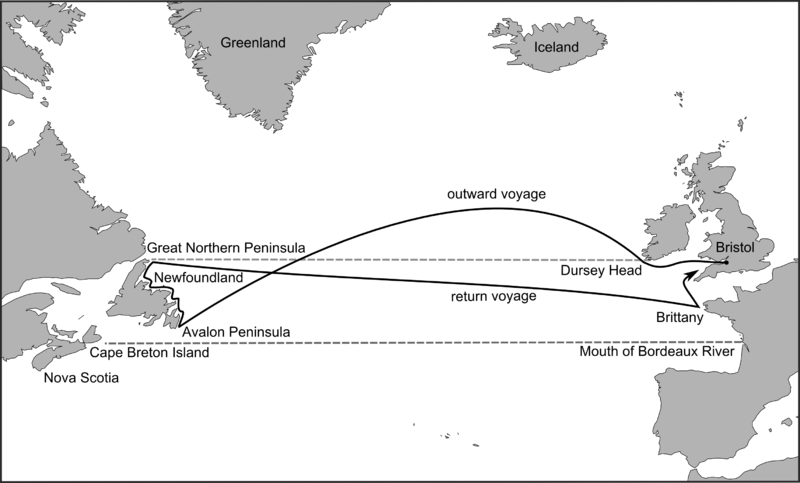
Route of John Cabot’s 1497 voyage on the Matthew of Bristol posited by Jones and Condon: Evan T. Jones and Margaret M. Condon, Cabot and Bristol’s Age of Discovery: The Bristol Discovery Voyages 1480-1508 (University of Bristol, Nov. 2016), fig. 8, p. 43.
Wikimedia Commons.
… in 1550 the English were still struggling with latitude. Their inability to find it, unlike their Spanish and Portuguese rivals, was one of the main things holding them back from voyages of exploration.
The replica of John Cabot’s ship Matthew in Bristol harbour, adjacent to the SS Great Britain.
Photo by Chris McKenna via Wikimedia Commons.The traditional method of navigation for English pilots was to simply learn the age-old routes. They were trained through repetition and accrued experience, learning to recognise particular landmarks and using a lead and line – just a thin rope weighted with some lead – to determine their location from the depth of the water. Cover the lead with something sticky, and you might bring up some sediment from the sea floor to double-check: a pilot would learn the kinds of sand and pebbles from to expect from different areas. And when they travelled out to sea, away from the coastline, they used a basic system of dead reckoning, taking their compass bearings from a known location, estimating their speed, and keeping in a particular direction for long enough. Or at least hoping to. They might keep track of their progress on a wooden traverse table, inserting pegs to indicate how far they had sailed, but it was ultimately a matter of rough estimation. Should they make any mistake — in terms of their speed, heading, or point of departure — they might easily get lost. But it was still a matter of trying to follow an already-known route. And English mariners of the 1550s did not even know that many routes.
For a voyage of exploration, by contrast, landmarks and sediment from the sea floor would be seen for the first time rather than recalled. By definition, there was no route to follow. So to launch their own voyages of discovery, the English needed to learn a new skill. They needed to look to the heavens.
Celestial navigation — measuring the altitude of heavenly bodies and then using geometry to determine one’s latitude on the earth’s surface — was by the 1550s already hundreds of years old. It had primarily been used to cross the deserts of North Africa and the Middle East — seas of sand, in which there might also be no landmarks from which to take bearings — and to navigate the Indian Ocean. Thus, while pilots in the Atlantic and the Mediterranean stuck to dead reckoning and soundings, Islamic navigators had for centuries used quadrants and astrolabes to take their bearings at sea. By the mid-fifteenth century, these instruments and techniques had found their way to Europe, where they were put to use especially by Portuguese, Spanish, and Italian explorers, along with additional instruments such as the cross-staff.
[…]
So for decades, English explorations relied on foreigners who either knew the routes that the English pilots didn’t, or who at least possessed the skill of mathematical, celestial navigation. The Italian explorer John Cabot (Zuan Chabotto), when he sailed to Newfoundland from Bristol in the late 1490s, was able to take latitude readings (he may even have been familiar with the older Islamic navigational practices, as he claimed to have visited Mecca). When Cabot died, the English expeditions that set out from Bristol in 1501-3 relied on Portuguese pilots from the mid-Atlantic islands of the Azores. And John Cabot’s son, Sebastian Cabot, who was involved in a few English expeditions, was so expert in mathematical navigation that he was eventually appointed pilot major for the entire Spanish Empire, making him responsible for the training and licensing of all its pilots — a position he held for three decades. When he led a voyage of exploration on behalf of Spain in 1526-30, a few English merchants became investors so that they could justify sending with him an English mariner, Roger Barlow, to secretly learn the Spanish routes across the Atlantic and have immediate knowledge if an onward route to Asia was discovered (as it turned out, South America got in the way).
January 15, 2020
QotD: Louis XIV and the first accurate maps of France
In our current age of apps, able to tell us exactly where we are in the world at any time, it’s hard to imagine an era in which most people would never have seen a map. The average English person of the mid-sixteenth century would have had little idea of the overall shape of their own country, let alone a foreign one. And even the merchants and elites who did have access to maps did not have an entirely accurate picture. Before the systematic adoption of trigonometric surveying, as well as the ability to accurately calculate longitude by observing Jupiter’s moons using telescopes, the process involved a lot of guesstimation. When the new techniques were introduced towards the end of the seventeenth century, the results could come as quite a shock. Louis XIV, when shown a revised map of his country, allegedly remarked that he had lost more land to his astronomers than to his enemies. France was a lot thinner than everyone had supposed.
Anton Howes, “The House of Trade”, Age of Invention, 2019-11-13.
December 26, 2019
The Origins of the Christmas Star?! – December 25th – TimeGhost of Christmas Past – DAY 2
TimeGhost History
Published 25 Dec 2019What did Mark Twain have in common with Genghis Khan and William the Conqueror? And how is this all tied into a Christmas Miracle? Well, much of this can be answered by a bright bulb of light, that astronomer Johann Palitzsch observed on Christmas Day 1758…
Join us on Patreon: https://www.patreon.com/TimeGhostHistory
Hosted by: Indy Neidell
Written by: Rune Væver Hartvig and Spartacus Olsson
Directed by: Spartacus Olsson and Astrid Deinhard
Executive Producers: Bodo Rittenauer, Astrid Deinhard, Indy Neidell, Spartacus Olsson
Creative Producer: Joram Appel
Post-Production Director: Wieke Kapteijns
Research by: Rune Væver Hartvig
Edited by: Mikołaj Cackowski
Sound design: Marek KaminskiColorizations:
Julius Jääskeläinen – https://www.facebook.com/JJcolorization/Sources:
King William I (“The Conqueror”), courtesy of National Portrait Gallery
Comet Halley and the Milky Way, courtesy of ESO (https://www.eso.org/public/images/com…)Soundtracks from Epidemic Sound:
Howard Harper-Barnes – “A Sleigh Ride Into Town”
Leimoti – “The Christmas Thieves”A TimeGhost chronological documentary produced by OnLion Entertainment GmbH.
November 9, 2019
History of Space Travel – Revolutions – Extra History – #2
Extra Credits
Published 7 Nov 2019Start your Warframe journey now and prepare to face your personal nemesis, the Kuva Lich — an enemy that only grows stronger with every defeat. Take down this deadly foe, then get ready to take flight in Empyrean! Coming soon! http://bit.ly/EHWarframe
As the Renaissance breathes new life into Europe, Copernicus develops mathematical proofs for the sun resting in the center of the universe. And from his works, a new world is born. The scientific world gets faster and faster. Revolutions of all kinds begin to set off chains of events that reshape human history. And as science improves, so do the tools of war. Both will be necessary to propel humanity to the stars. Join us on this race through the scientific works between the Renaissance and the Industrial Revolution.
Copernicus’ publishing really came down to the wire! Legend has it that he was given the final printed pages on his death bed. When they presented him with the book, he awoke from a coma, saw his life’s work and finally passed away in peace. Or so the story goes.
November 2, 2019
History of Space Travel – Looking to the Stars – Extra History – #1
Extra Credits
Published 31 Oct 2019Start your Warframe journey now and prepare to face your personal nemesis, the Kuva Lich — an enemy that only grows stronger with every defeat. Take down this deadly foe, then get ready to take flight in Empyrean! Coming soon! http://bit.ly/ECWarframe
What do Ptolemy and ancient Chinese rockets have in common? Without either of these things, space flight wouldn’t be possible! In order to understand how we started traveling amongst the stars, we have to talk about how we started studying stars in the first place. Since the very first civilizations we’ve always looked at the night sky with wonder & curiosity but also as a way to try and understand the future and time itself.
July 23, 2019
QotD: Science of the ancient Greeks
… discussions that mention the Great Library and/or the supposed impact of Christianity on “progress”, with the idea being that the Scientific and Industrial Revolutions were due on some kind of inevitable deterministic historical timetable but were wantonly derailed “for a thousand years” by the destruction of the Great Library, which is supposedly why we don’t live on the moons of Jupiter.
The problem with all this is not just that the scholars of the Mouseion were rather more interested in the textual variants of Pindar’s paianes than studying physics, but also a common modern misunderstanding about the nature of Greek “science”. Many modern people, including modern scientists, hear about the Greeks discussing motion or “atoms” or doing geometry to measure the circumference of the Earth or the distance to the Sun and assume that they were doing “science” in the modern sense of the word. Historians also sometimes refer to Greek natural philosophy as “science” and popularisations of the history of science draw simplistic direct lines between things like Greek discussions of “atoms” and modern atomic theory. But this obscures the fact that Greek proto-science was, while a distant lineal ancestor of the modern sciences, very unlike them in many important respects. At best, it was a highly rational attempt at understanding fundamental precepts of the physical and natural world. But it used induction and common sense more than measurement and experiment. There were exceptions (mainly in geometry and its related field, astronomy), but the Greeks were usually not interested in empirical measurement and so were usually even less interested in genuine experiments. Most Greek proto-science was a highly abstract and philosophical affair, based on some observations, but without modern ideas of carefully designed and repeatable experiments with calibrated measurement and attendant mathematics. Most of their “science” was done by sitting around, thinking and talking about concepts, not by actually dropping weights from towers – though they did do thought experiments which sometimes led to correct conclusions and sometimes did not. Their “science” was not our science.
This means that a Greek conversation about “atoms” was largely an abstract and metaphysical exercise about the philosophical nature of a thing and how many times it could be divided conceptually and what this may mean; the word comes from the Greek ἄτομος meaning “unhewn, uncut, indivisible”. No Greek philosopher walked away from such a conversation and decided to try to build some equipment to explore the physical nature of atomic structure and would probably have considered such an idea absurd. Nor would they have taken the step of considering that different forms of matter, liquid or gas were made up of different combinations of atoms and so decide to experiment with these substances to understand this better, since this was completely contrary to their (erroneous) conception of the “Four Elements” of Earth, Air, Water and Fire. The nature of Greek thought did allow them to draw useful and often correct conclusions about the physical universe, but it also set up barriers to the true scientific method that they simply did not and could not cross.
This was one of the reasons there was no direct link between their proto-scientific “science” and technology. Natural philosophy was, as the term would suggest, the preserve of philosophers. In a world where most of the population had to be devoted to agricultural production and most of the rest often barely got by, sitting around and talking about abstractions like “atoms” was a rich man’s luxury. Most philosophers either came from the upper class (though maybe its lower echelons in many cases) or had rich patrons or both, which meant most philosophers had little interest in making or inventing things: that was generally the preserve of lowly mechanics and slaves. Again, there were exceptions to this – Archimedes seems to have had some interest in the engineering applications of his ideas, even if most of the inventions attributed to him are probably legends. On the whole, however, lofty Greek philosophers didn’t think to soil their hands with something as lowly as inventing and making things.
Tim O’Neill, “The Great Myths 5: The Destruction Of The Great Library Of Alexandria”, History for Atheists, 2017-07-02.
January 25, 2018
The Canals of Mars – Eye of the Beholder – Extra Sci Fi – #10
Extra Credits
Published on 23 Jan 2018The Canals of Mars ignited so many imaginations, especially in science fiction stories, but they never really existed. What made us believe in them? And why did so many writers keep dreaming about them even after the theory had been disproved?
August 8, 2017
QotD: The next “Carrington Event”
The last one happened in 1859. The Earth was hit by a cloud of magnetized plasma from a “coronal mass ejection” — something that our Sun often does. Most fly off in other directions; the last that barely missed us was in July, 2012. (You can tell it missed from the fact that the Internet still exists.) The last bullseye on our beloved planet was named after the brilliant English amateur astronomer, Richard Carrington (1826–75), who, in the course of figuring out what happened, demonstrated the existence of “solar flares.”
He was trying to explain why telegraph operators all over the world, on the 1st of September, 1859, were suddenly getting electric shocks; and then, prior to the whole cable system going down, why some had been able to send and receive messages even after disconnecting their power. Too, why auroras had lit up the night sky at temperate latitudes so bright people could read newspapers by it; or why those at higher elevations near the equator could enjoy the aurora borealis and the aurora australis — simultaneously.
Now, the world a sesquicentury ago was not so dependent upon electricity as it is today. And the system of telegraphy was so ridiculously simple, that it was soon repaired. I daresay Morse Code is worth learning in preparation for the next Carrington Event — which, when it comes, we will be able to predict, at best, a few hours in advance. (Other cosmic events might impinge on our lifestyles meanwhile, but I like to consider my apocalypses one at a time.)
Gentle reader may do a mental inventory of the gizmos in his environment that are connected directly or indirectly to the power grid. Then add in anything that contains a computer chip, whether it happened to be “on” or “off” when the Earth’s magnetic field was impacted. For I assume it will all turn “on” of its own, for a brief but memorable interval.
The “beauty” (as they say in Cape Breton) is that we have no back-up system, and moreover, there can be no back-up, except what we can rig from horse, or paddle. For we have made ourselves totally dependent upon sparks.
On the plus side, the environmentalists may exult, because the quick reduction of the world’s population to post-Plague mediaeval levels could prove a lucky break for the other endangered species.
It will, even more happily, improve national security for the survivors in USA. For the same magnetic storm that makes the cities (and towns) of America uninhabitable will also have disabled the military capacities of Russia, China, and Iran. If they want to come at us they will have to do so in sailing ships. Moreover, the depopulation of Mexico will probably reduce the invasion threat from there, whether or not Donald Trump is President.
David Warren, “The highest tech”, Essays in Idleness, 2015-08-22.

